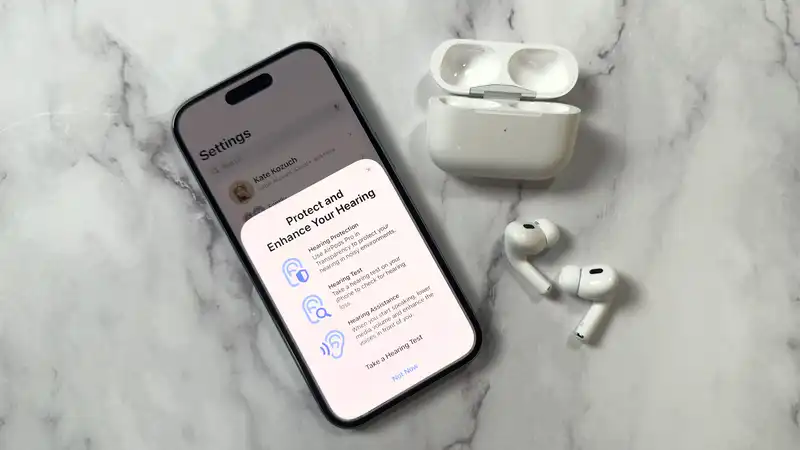Apple is preparing to roll out what it believes to be one of its most exciting health innovations to date. AirPods Pro 2, Apple's most premium wireless earbuds, will be updated with three hearing health features, including hearing aid capabilities.
To establish the hearing aid experience, the AirPods Pro 2 menu (found in the iPhone Settings app) is equipped with a hearing test that can be completed in just minutes from essentially anywhere. The clinically validated process yields an audiogram that is equivalent to that obtained from an audiologist.
In addition, whether or not a person has been diagnosed with a hearing limitation, wearing hearing protection can help limit exposure to environmental sounds that can be harmful. For example, at a concert, a sporting event, or when drying your hair.
We have been able to try these features with people with hearing loss, but for all others who are ready to try these features when they become available starting the week of October 28, here is what you need to know.
The first feature of the new hearing health tool is a hearing test. Apple conducted a study involving about 200 participants to obtain FDA approval.
The hearing test begins with an automatic background noise test to ensure that the ambient noise level is quiet enough. It is important to find an ultra-quiet location, even if there is a low-frequency hum, because ambient noise can interfere with the hearing test.
Next, a tip fitting is performed to check for compatibility with the acoustic seal. If for some reason your current ear tips don't fit well and additional sizes have long since run out (or maybe that's just me), Apple now sells a new set for $12.99.
During the hearing test, three pulses are played continuously. Each time a sound is played, the user taps the screen, listens to the sound in the right ear, and then moves on to the left ear. When the hearing test is complete, the dBHL (the ability to hear sounds at a specific level) is displayed. Results may be symmetrical or asymmetrical. You will also see an audiogram chart that visualizes the eight frequencies that are used as standards in clinical standard audiometric testing.
If you have mild to moderate hearing loss, you will be prompted to proceed with a hearing aid experience tailored to your audiogram. Optionally, you may enter your audiologist's audiogram. You must be at least 18 years old to activate the hearing aid feature.
The hearing aid app settings allow you to adjust amplification, transparency balance and tone, ambient noise reduction, and conversation boost. With Media Boost, you can also customize how your hearing profile works, including music playback, video playback, calls, and FaceTime with Media Boost. In addition to being able to adjust it in the AirPods settings menu, you will also be able to access convenient controls through shortcuts in the Control Center.
For those who have never used OTC hearing aids, it is important to note that it can take several weeks to become accustomed to adjusting hearing aids in everyday situations. When someone with undiagnosed hearing loss tried this feature, I felt some reverberation, and my friend with hearing loss noticed some reverberation as well. However, after having the AirPods Pro 2 in their ears for an hour or so, they did not feel the sensation as much.
Even those without hearing health need to pay attention to their hearing health. A hearing health study commissioned by Apple found that hearing damage can have a negative impact on a person's overall health, not just ear health. One way to monitor exposure to loud noise is through the Noise app for the Apple Watch.
According to the AHS, one in three people are regularly exposed to loud environmental noise. Some scenarios are obvious, such as concerts and sports games. But others, such as fitness classes and causes, can cause hearing damage over time.
The new hearing health settings are designed for everyday life and will now be enabled by default, with loud sound reduction throughout the transparency and adaptive settings. Headphone safety features for listening to music and adaptive audio already existed, but hearing protection is specifically designed with decibel thresholds in mind.
.









Comments